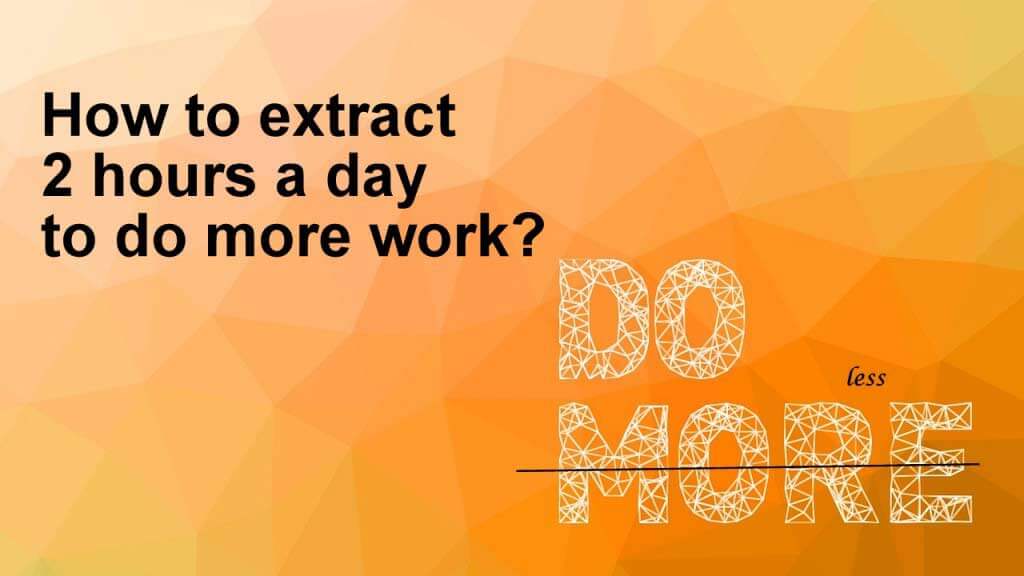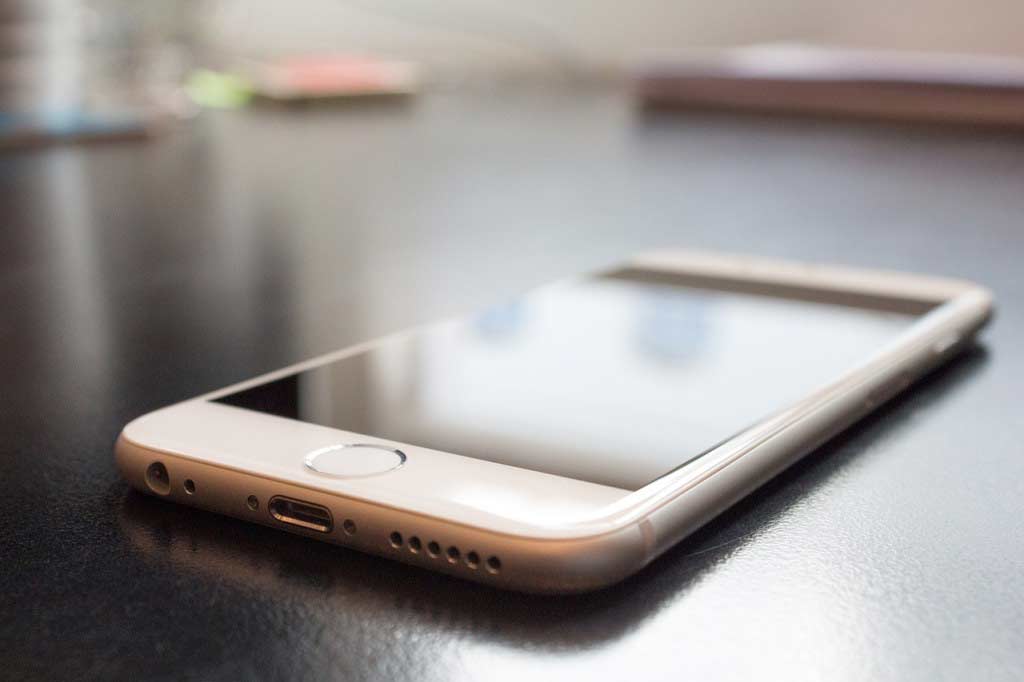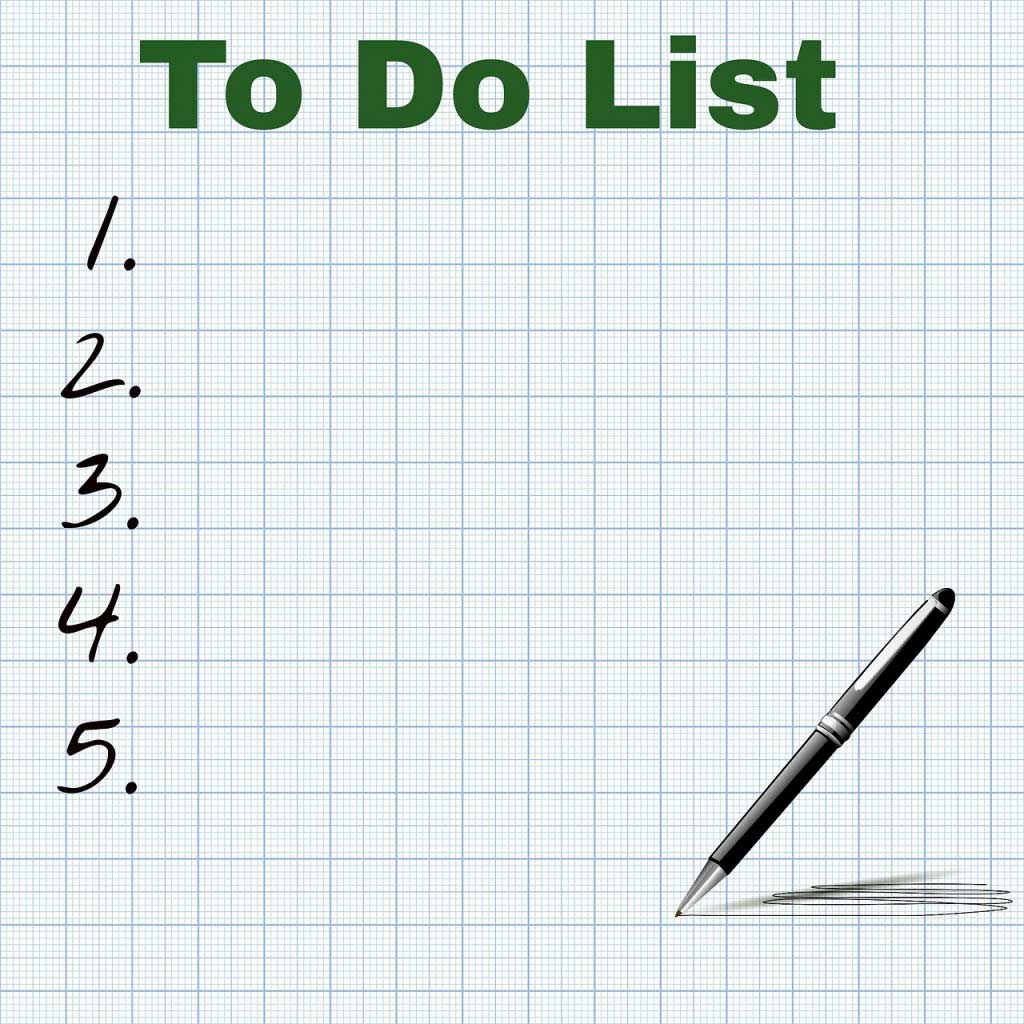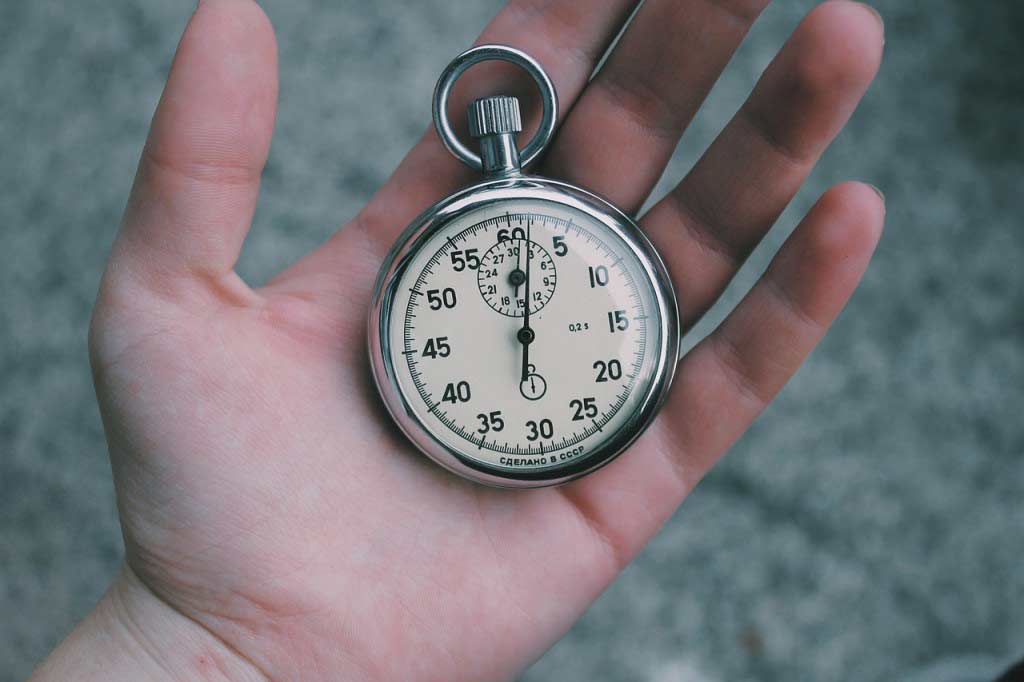Updated April 21, 2023

Work
We all are procrastinators. Some are a lot more, and some are a little less. But we all suffer from this same issue, the habit of putting things off. What if you do something that you don’t need to put off anything anymore? What if you can practice conscious procrastination on certain unimportant things to get major things done? What if applying the same method, you can extract at least 2 more hours daily to do more work?
If you are eager to know, just hang on and read this article through and through. In this article, we will share what you can do will help you extract 2 hours out of nowhere. No, there is no magic bullet or quick fix. First, you need to understand the formula, and then practice it regularly. Then with enough practice, extracting 2 hours or more would be significantly easier.
How?
Here’s how.
This article will show you the first research that will identify why you procrastinate! Then we will give you 3 specific ideas to deal with that major cause of procrastination. Lastly, we will discuss how you can extract 2 or more hours from your day for more work.
Let’s get started.
20 minutes barrier
Do you know why you procrastinate? Do you know why you don’t seem to get done with the things you should have done a week before? Do you know why lack of accomplishment makes you anxious?
There is only one reason.
If you rightly guessed it, you would know it’s a distraction.
Whenever you are trying to do major work, your mobile beeps! Congratulations, you have received the first notification (distraction) from Facebook. Then you check out Facebook and forget you were doing important work. You remember and return to your work; again, there is another beep. This time it’s a notification in your Gmail. Again you have received a new email. And you leave your work on the table and check the new email. After you check your email, you remember and return to work. Again after a point of time, you receive another notification from Whatsapp. Congrats! You are distracted again.
Why we’re bringing this up? We will talk about two types of research, and then you will understand why.
- First, do you know that research says that the average human attention span has reduced from 12 seconds to 8 seconds on a single thing? That means if you’re doing any major work, you can, on average, concentrate on that major task for 8 seconds, and then you would be distracted by something else.
- The second research is more important than the first one. It says once you’re distracted, you need at least 20 minutes to get back your previous focus on that major task.
Now in a day, we get distracted many times. Let’s say you get distracted 10 times a day. That means you waste 200 minutes daily, meaning 3 hours and 20 minutes of time. Can you imagine how much distraction distracts you from work? It’s not you who is the problem. You’re not lazy or incompetent. You’re simply not able to focus on a single thing.
In the following section, we will share 3 ideas to beat distraction. If you follow them, you can do something about it.
Be distraction-free: 3 ideas to conquer it
Your work is worship. It’s very important, and no one will if you don’t value your work. If you value your work, pay heed to the following ideas.
-
Pen and paper technique
To avoid distractions, keep a pen and paper nearby and jot down any important thoughts that come to mind while working on a major task. This technique helps you stay focused and eliminates the urge to switch tasks.
-
A demon named smartphone
Your mobile can be a distraction while doing important work. Putting it in airplane mode or out of sight can help minimize distractions. Remove unnecessary items from your workspace to increase focus and productivity.
-
Final stroke
Yes, this is the master stroke. But to use it, you need to be aware of what you’re doing and what you’re getting distracted by every day. We will ask you one question. Here it is – “What is the one thing via which you get distracted?” Take out a piece of paper and write this question. And answer for yourself. For most people, the number one thing which distracts them from doing their major chunk of work is a mobile phone. But it may not be in your case. You may feel that you need to change your room or space. If you’re working in an office, make arrangements to get away from the noise and distraction. If you say that the major distraction is the constant conversation of your co-workers and you know they always talk instead of doing work, use a good headphones and listen to some good music while working. Awareness precedes clarity. Once you are aware of the main thing that distracts us from doing your most important work, you can take action.
A simple technique to extract 2 or more hours of work a day, every day
This technique is simple, and you can quickly master it if you practice it. You only need a pen, a piece of paper and a stopwatch. If you are ready, let’s see how we could extract 2 or more hours a day.
Reality
The reality is that we waste most of our time in distraction. We have yet to learn when someone asks us what we are doing. All we say is that we are busy. But busy being what? Busy being busy! The reason we don’t know where the time is flying is that we are not aware of the distraction at all, and we are also unconscious of how much time we spend simply.
Looking at our mobile screens and how much time we waste by mindless surfing on the internet. How would we stop it? By applying a simple technique!
The technique and how to use it
This technique is called Pomodoro Technique. Here’s the way you should practice it.
- Take a pen and paper and write down everything you need daily. It should not be more than 3-5 things.
- Select which one among those 3-5 is the most important.
- Now, decide how much time it would take to complete that task. For example, you would require 90 minutes to complete this task.
- Write down the * symbol on the right-hand side of the task. How many? Divide the total duration of the task by 30 minutes. For the above example, you need to put 3 * symbols. To cite an example, let’s say you want to write a report it would take 90 minutes to complete. Here’s how you should present it –
- Writing the report (***)
- Take your stopwatch, set 25 minutes, and get to work. It’s redundant to say that clear away all distractions, your phone, diary, book, material, anything that you won’t require.
- Once you are done with 25 minutes of work, take a break of 5 minutes. Then repeat till you are done with the task. It’s advisable not to take any break for more than 5 minutes as it may distract you from your major task, and you may not even start again on the work at hand.
This is a simple technique to get more work done in less time. And also, you would be able to increase focus and extract more hours. Many people have been using this simple technique and reported that they have been doing much less work (time) and getting more work done.
Author Cal Newport calls this type of focused work deep work. And if you have done deep work, you would know that deep work should be done in small chunks like Pomodoro Technique. Do 25 minutes of deep work and take a 5-minute break. And again, go back to work.
There are a couple of things you should consider here –
- Even if you get many more things done and can extract more than 2 hours a day by following this great Pomodoro technique, you won’t be able to do more than 10 sessions daily. You won’t be able to do 300 minutes of deep work daily, at least initially. When you are starting out, it’s wiser to start small. 300 minutes of deep work means you could finish 3-5 major things during that time. Gradually as you get better at using Pomodoro Technique, you can increase the number of sessions.
- Don’t worry if you fail to implement the technique at first. Trying something new can be distracting, and feeling that way is natural. But don’t stop. If you fail today, don’t leave it and say it doesn’t work. Try it again tomorrow. And again the day after tomorrow. With time, you will see that you’re getting better and better at Pomodoro Technique, and you are able to achieve much more than you’ve ever achieved before.
In the final analysis, it can be said that distraction is a disease. And we suffer from it more when we try to multi-task and cram as many things as we can simultaneously. Rather do one thing at a time. Multi-tasking is a myth because your mind can’t concentrate on two things simultaneously! It can only concentrate on one thing at a time. So, whenever you are doing an important task, concentrate on it. Don’t do anything else. And you would see that you’re not only getting extraordinary results; doing anything would be much easier than you ever thought possible. We started this discussion by extracting 2 or more hours a day. Let’s finish the discussion with the same. Extracting time is all about saying no to distraction and saying yes to one thing at a time with your full focus.



